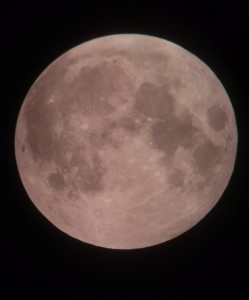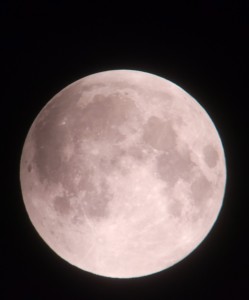May Flower Super Moon Total Eclipse, May 16, 2022
Last night featured the first “full length” total lunar eclipse visible from the Continental United States since January 2019. This is one of two similar total lunar eclipses to grace our skies this year. Weather largely cooperated in the greater Houston, Texas area to allow observations to take place. I was able to follow all the stages of the eclipse, from the very first hint of penumbral shading, through “first contact” (when the Moon first enters the dark umbral shadow). Then the partial phases where I followed the progression of the covering of the bright lunar disk, watching and timing the moments the terrestrial shadow sweeps over pre-selected lunar features. This looked to be a dark eclipse, even from the early partial phases, because normally the shadowed part of the Moon is still visible due to light scattered in the umbra. This part looked noticeably dimmer than during previous eclipses.
All of the images below were made afocally with a Samsung Galaxy 21 smart phone in pro mode, exposure times ranged from 1/500 second to 2 seconds at ISO 400. The telescope was a University-owned CPC 1100 (11-inch f/10 Cassegrain, with 41 mm eyepiece).
This pair of images was taken during the penumbra phase of the eclipse. First penumbral contact (invisible) was at 1:32:07 UT (8:32 CDT) and the shading was expected to be first seen 30 minutes or so later. This stage of the total eclipse is the most subtle type of lunar eclipse, visible as a faint shading (left side of lunar disk). The first image above was taken at 2:01:41 UT, and the second was taken at 2:13:47 UT. During the last 10 minutes before partial eclipse began, the shading intensified in the region, leading to the subtle entry of the Earth’s dark umbral shadow onto the Moon’s disk at 2:27:53 UT (8:28 pm CDT).
The progression of the partial phases is summarized in the six images below. It took a little over one hour for the Moon in its orbit to slip entirely into the shadow of the Earth. The below images represent the changes seen as the Moon gets deeper into the umbra. The last two images were made such as to emphasize the eclipsed part of the Moon. The beginning of the total eclipse phase was at 3:29:03 UT (10:29 pm CDT).
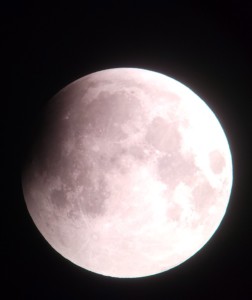 Just after start of partial eclipse, 2:30:06 UT. Just after start of partial eclipse, 2:30:06 UT. |
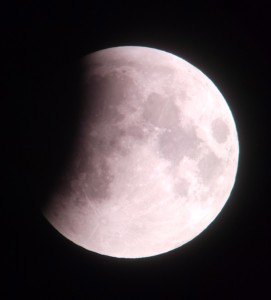 2:31:04 UT. 2:31:04 UT. |
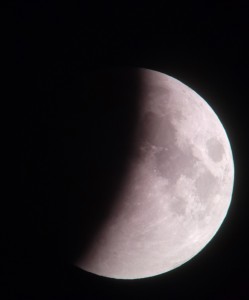 2:58:25 UT 2:58:25 UT |
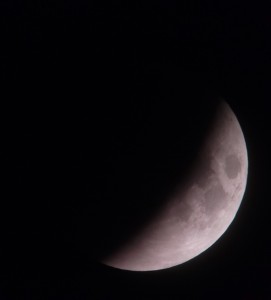 3:10:30 3:10:30 |
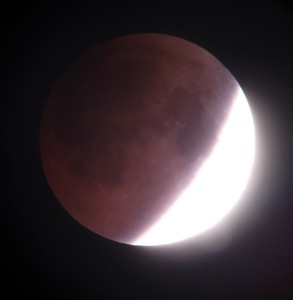 3:16:13 UT. 3:16:13 UT. |
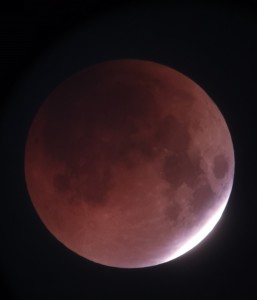 3:26:42 UT 3:26:42 UT |
It is always interesting to watch the transition from one phase of the eclipse to the next, especially through a telescope with a wide field of view that allows the entire moon to be seen. It can also be interesting to see how different settings in imaging can result in different color balances in the results. The images were taken at various times through the 86 minutes of totality. Maximum / Mid-eclipse (when the Moon is deepest in the umbra, and thus darkest) was at 4:13 UT. The image below at 4:16 UT best represents the visual appearance of the Moon as seen through a small telescope: as seen by me it had more of an orange color than a red color; in fact the brightest section took on a golden orange hue.
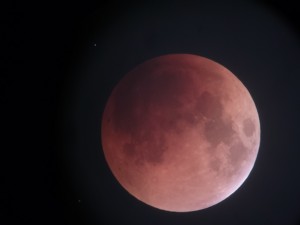 3:30:13 UT, a wide field view showing stars 3:30:13 UT, a wide field view showing stars |
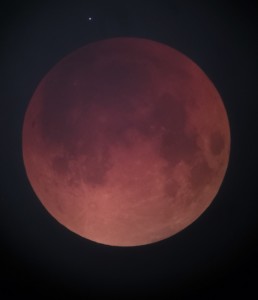 3:51:59 UT 3:51:59 UT |
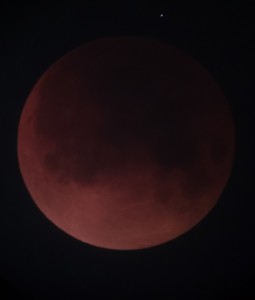 4:13:24 mid-eclipse 4:13:24 mid-eclipse |
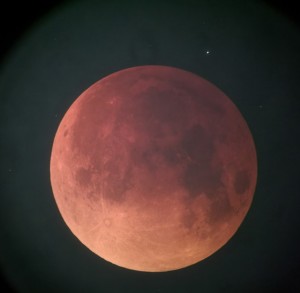 4:16:07 UT 4:16:07 UT |
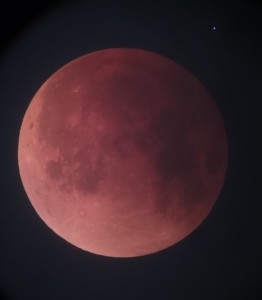 4:29:30 UT 4:29:30 UT |
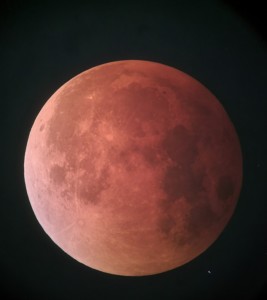 4:44:29 UT 4:44:29 UT |
Dr. Saganti recorded a series of wide field images during totality, with the magnification provided by a hand held finder scope. The images were erected to approximate the orientation visible to the unaided eye.
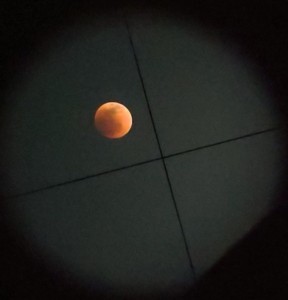 |
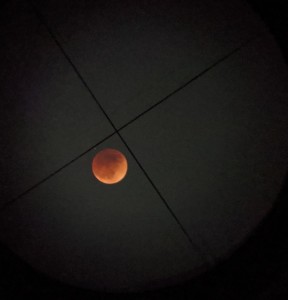 |
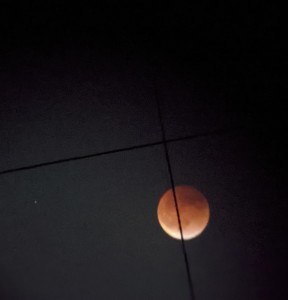 |
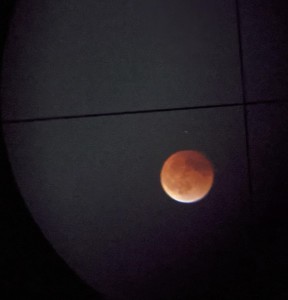 |
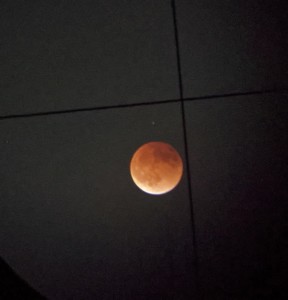 |
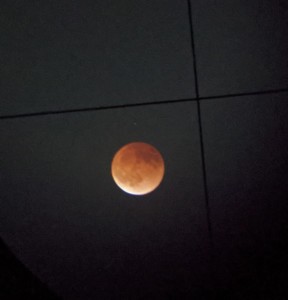 |
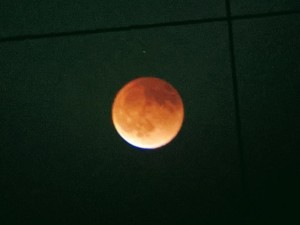 |
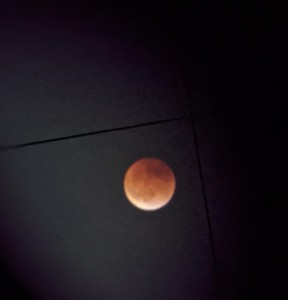 |
Once totality ended, at 4:53:56 UT (11:54 pm CDT) the bright part of the moon grew steadily as the partial phases played out in reverse from before. At this point, some high clouds moved down from a set of storms in northeast Texas and made it difficult to distinguish subtle hues of color in the eclipsed part.
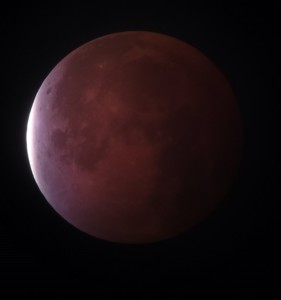 4:56:25 UT 4:56:25 UT |
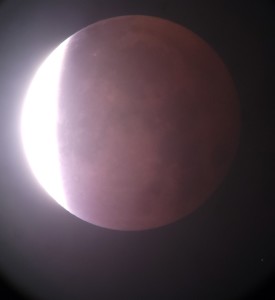 5:04:43 UT. 5:04:43 UT. |
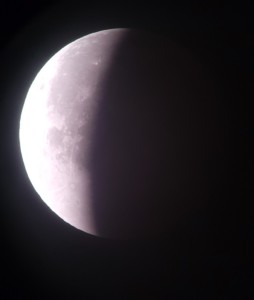 5:17:02 UT. 5:17:02 UT. |
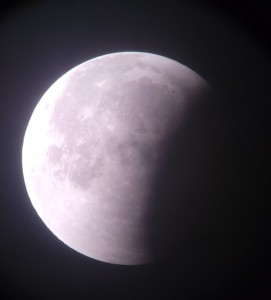 5:38:32 UT 5:38:32 UT |
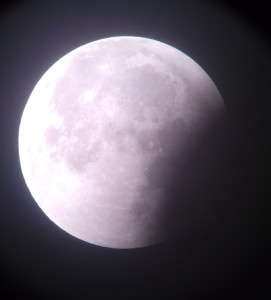 5:46:09 UT. 5:46:09 UT. |
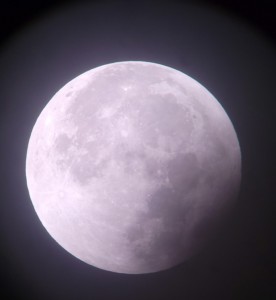 5:54:40 UT. 5:54:40 UT. |
Finally, fourth contact (5:55:07 UT, 12:55 am CDT), then the latter penumbra stages as the Full Moon returns to its former brilliance. The last of the penumbral shading fades from optical view about 30 minutes after fourth contact, with the last lunar contact with the penumbra occurring at 6:50:48 UT. The whole eclipse, from start to finish, lasted 5 hours, 18 minutes, and 40 seconds; the umbral part lasted 3 hours, 27 minutes, and 14 second; and the total eclipse part lasted 1 hour, 24 minutes, 53 seconds.
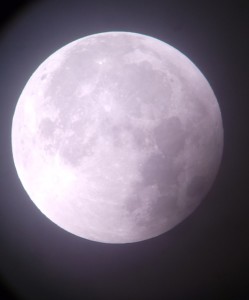 5:58:27 UT 5:58:27 UT |
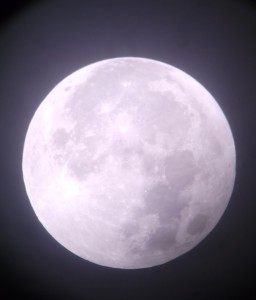 6:10:49 UT. 6:10:49 UT. |
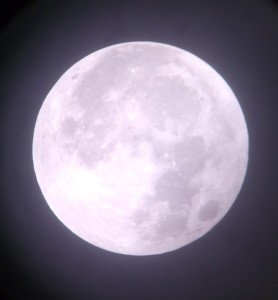 6:16:26 UT. 6:16:26 UT. |
The next total lunar eclipse to be visible from North America will happen on 8 November 2022.

